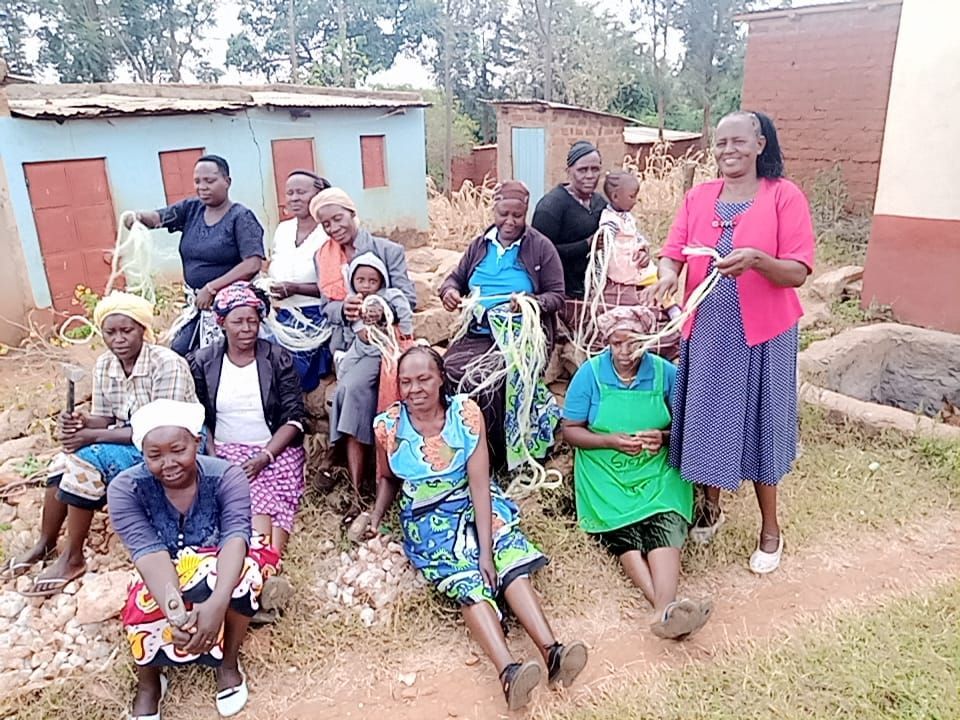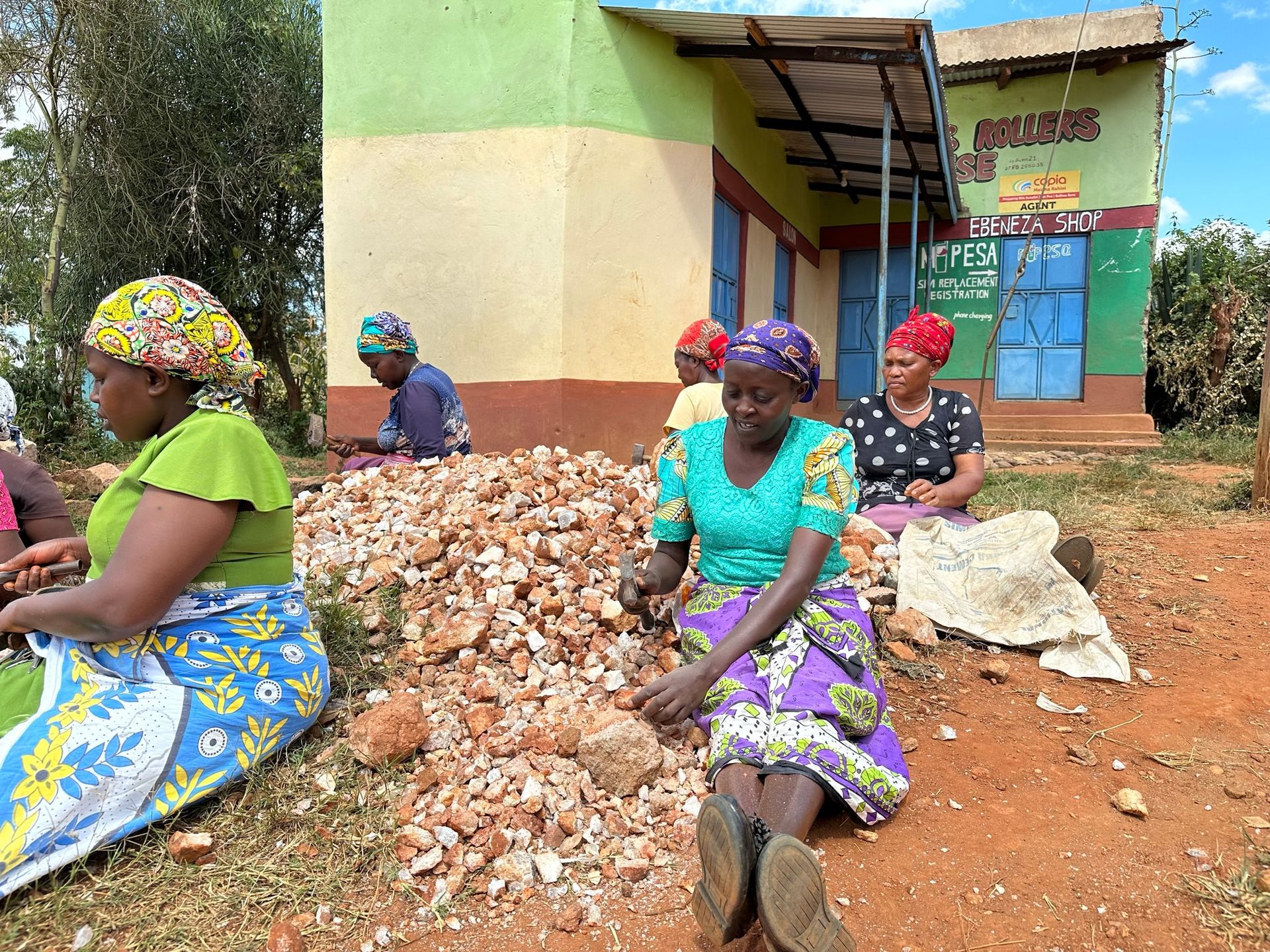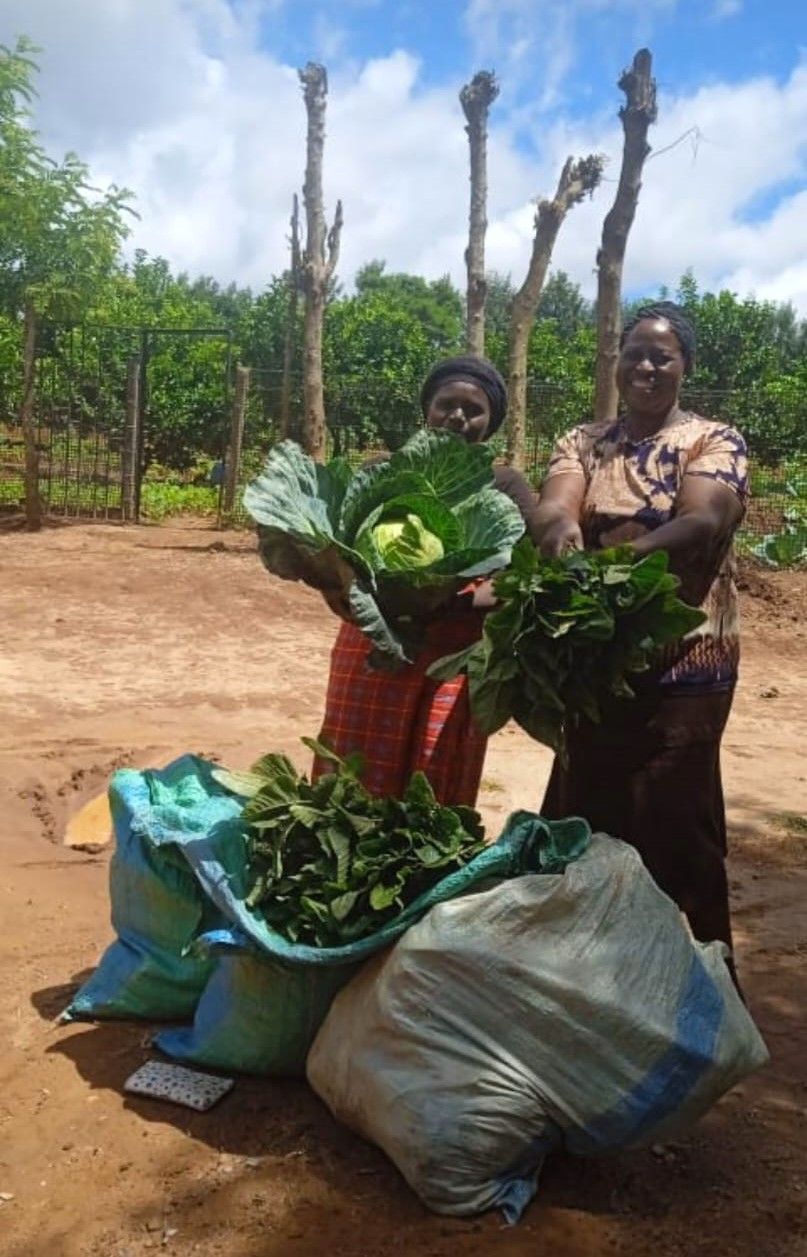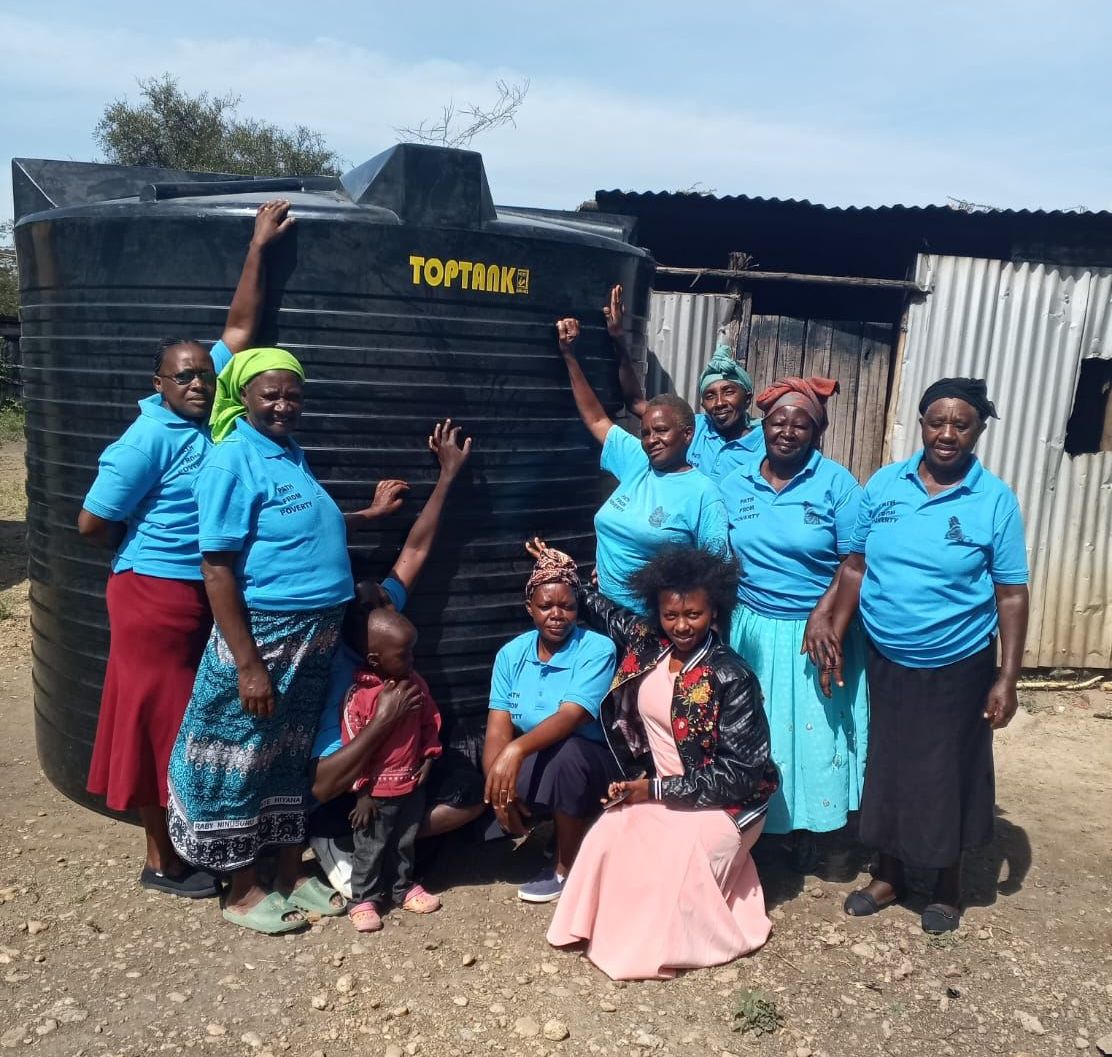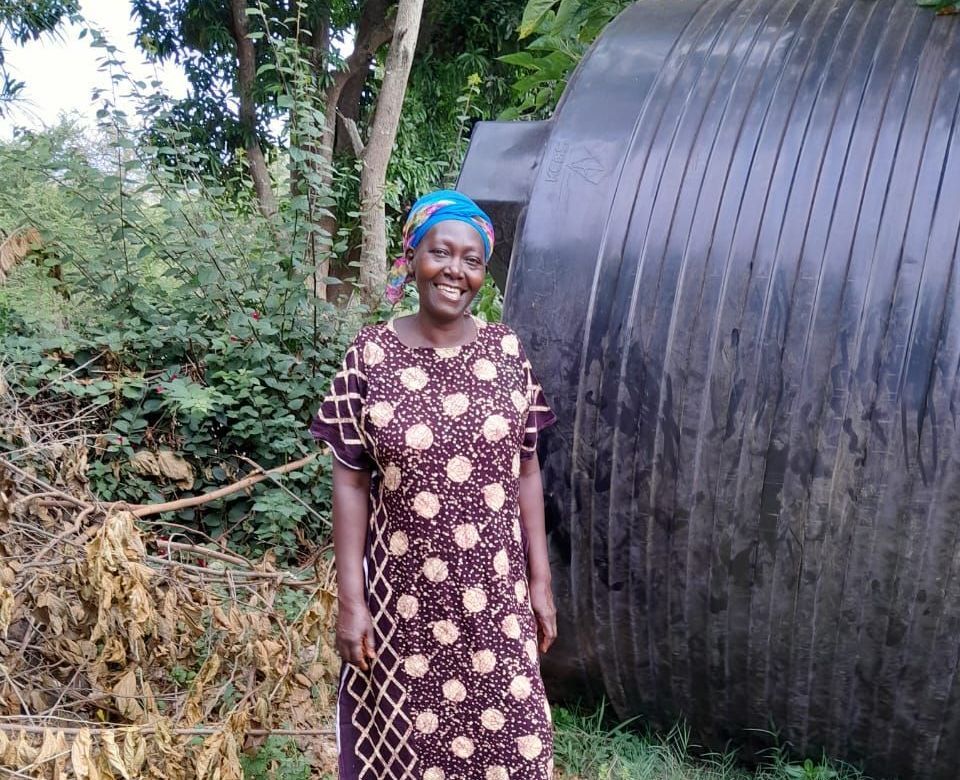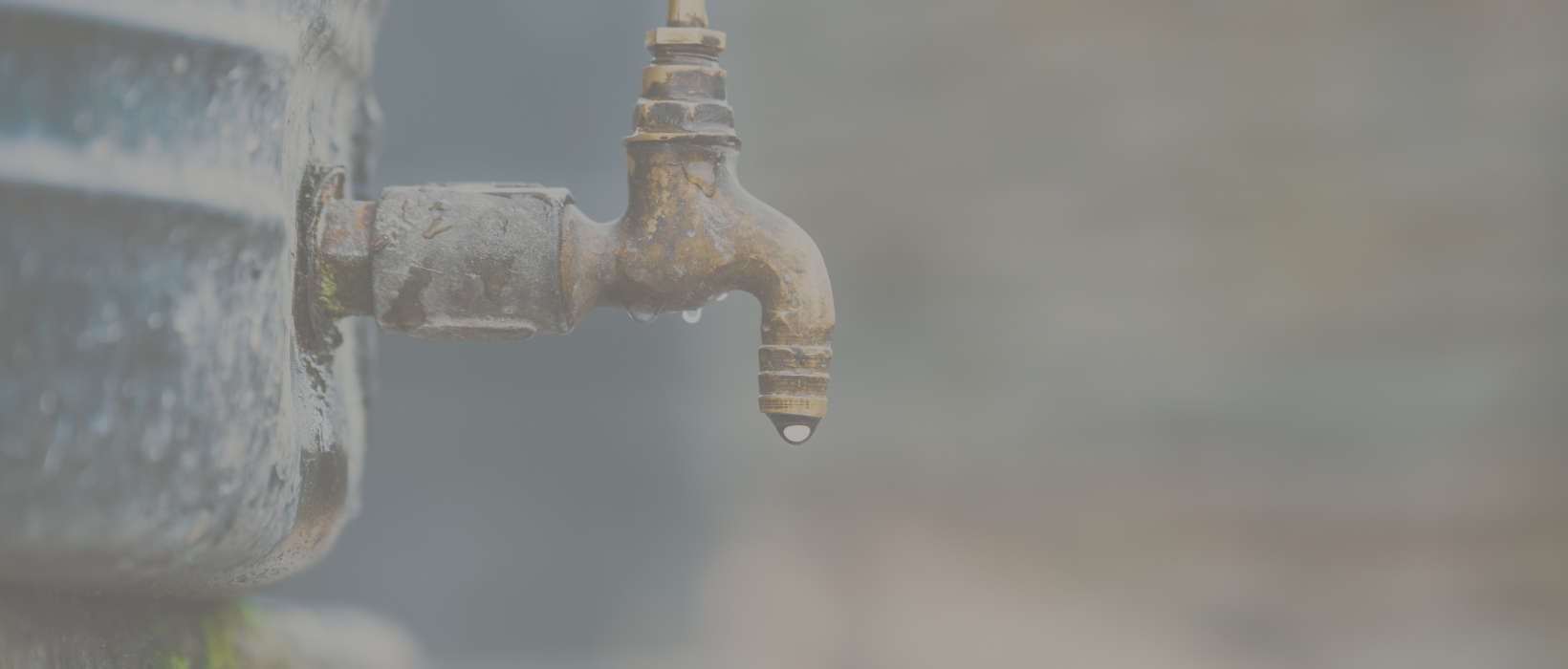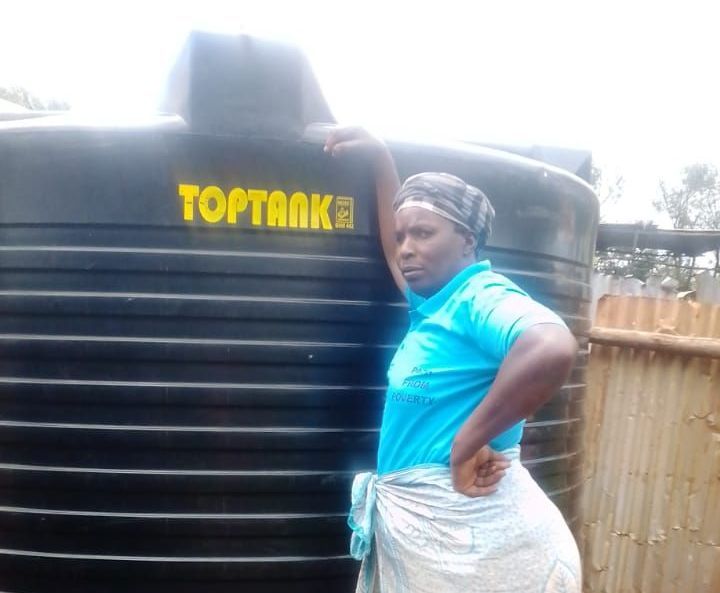Water is Work
Written by Mary McBride, member of Work Team 2023
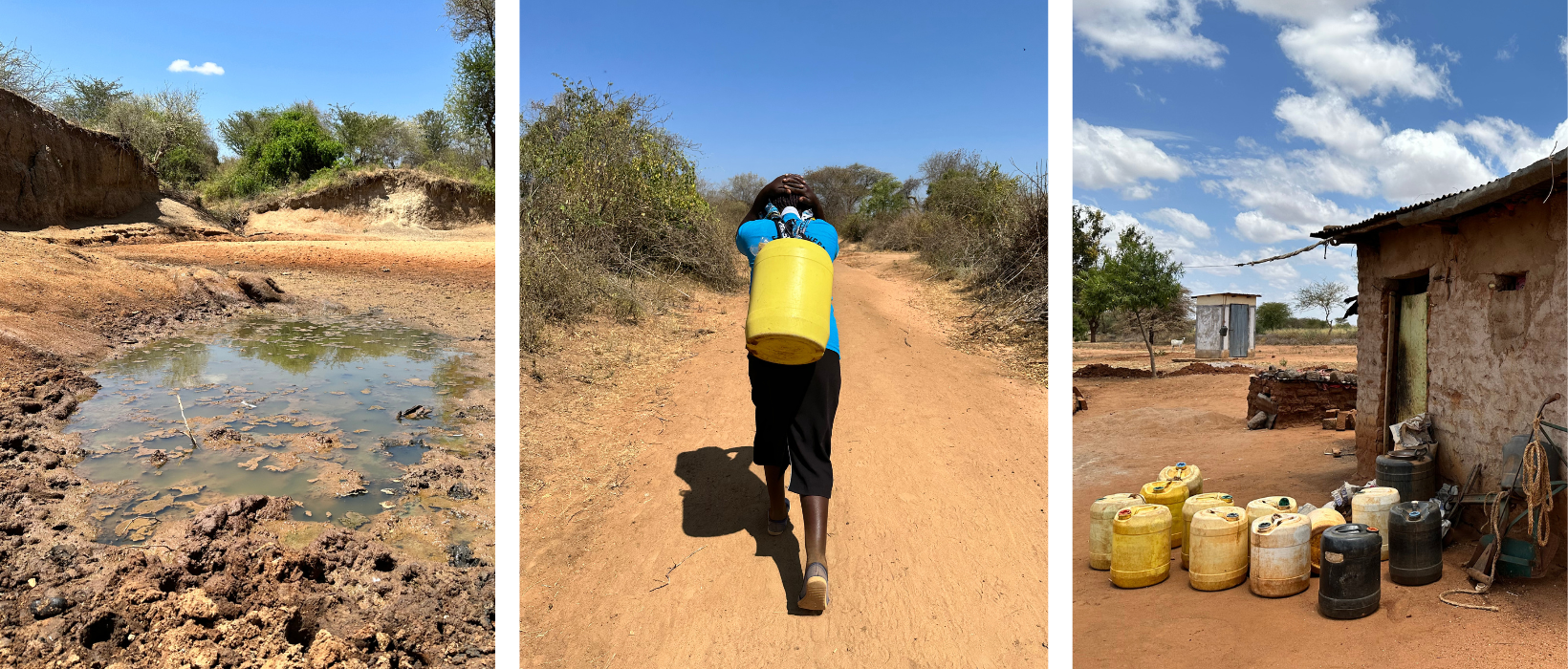
In rural Kenya, gathering water is a physically demanding, time consuming responsibility that almost always falls to women and sometimes to children, especially girls.
Kenya has been experiencing severe drought conditions for the past 3+ years. A drought so severe that the crops Kenyans rely on for food are dying in the rock-hard, parched soil. A drought so severe that the traditional water sources women use to get water have dried up. The water the women are able to access now is farther away, dirtier, and less available.
Women and children collect the water in “jerry cans”, bright yellow plastic containers that were originally filled with cooking oil. The empty containers are cleaned and then reused for water collection and storage (families purchase these in bulk in community markets). When full, the container holds five gallons of water and weighs around 44 pounds. Women carry the filled containers on their heads or backs. How long would five gallons of water would last you when you need it for drinking, cooking, laundry, watering animals, washing dishes, etc? How far could you travel with a 44-pound jerry can on your head?
Women often go every day to fetch water or at least multiple times per week. Before going for the water, a woman must figure out where the available water source is located that day. Because of the drought, it may change week to week. She does this by starting out in the direction she used before, talking with women as she goes along to learn if the water is still available at the old spot. Women walk and carry the water because they have no other options. They are among the poorest of the poor. Some women have recently started using donkeys to transport the full jerry cans–but only those who can afford to purchase and care for a donkey.
As the drought continues, the traditional sources (streams, rivers, and lakes) have dried up and become not only scarcer but more contaminated. These open water sources serve animals and humans. Donkeys, goats, cows, and wild animals use these sources to drink and bathe. Often the water source will run through many communities and carry other contaminants (trash, industrial waste, medical waste, etc.) Although women use a cloth filter to strain the water, they must still boil the water before it can safely be used for consumption. Even then, it looks dirty and may still harbor a myriad of impurities.
Once the water has been collected, the woman must then take it home. Imagine walking in 90-degree weather, over steep and uneven dusty paths, carrying 44 pounds of water.
Regardless of age, women are the primary water gatherers followed by children. This greatly curtails a woman’s ability to do much else besides get water and cook for the family. Her opportunities for earning income are limited. For children, fetching water for the family is often cited as a top reason they drop out of school.
The solution to relieve women and girls of this burden is simple–provide access to clean, safe water at home.
